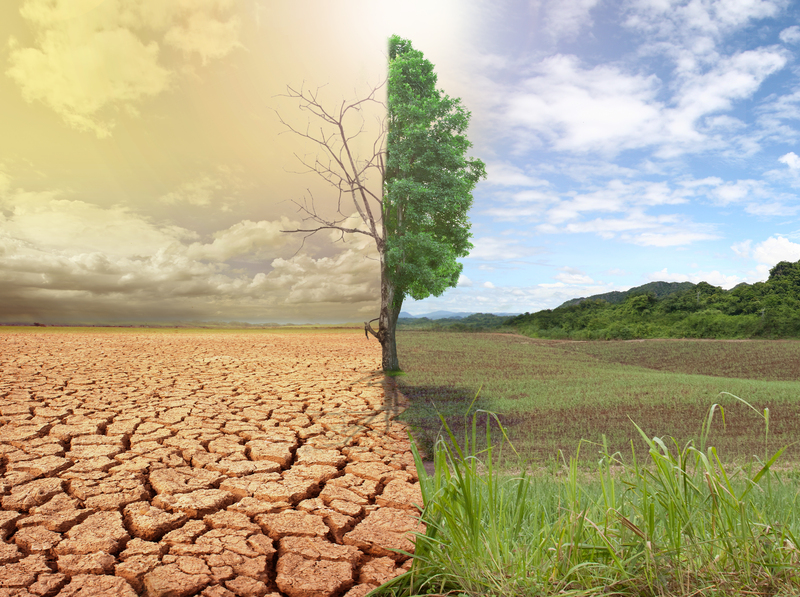How to Lower Plastic Usage
Posted on 04/05/2025
Plastic pollution is a pressing environmental issue that affects both terrestrial and marine ecosystems. Reducing our reliance on plastic is crucial for the well-being of our planet. In this article, we'll explore effective strategies to lower plastic usage, understand the pros and cons of these practices, and offer practical tips to help you make a significant impact.
Why Lowering Plastic Usage is Important
Plastic takes hundreds of years to decompose, and its accumulation in oceans and landfills poses severe threats to wildlife and human health. By lowering our plastic usage, we can mitigate environmental damage and promote a more sustainable lifestyle.

Start with the Basics: Reduce, Reuse, Recycle
One of the most effective ways to lower plastic usage is to follow the three R's:
1. Reduce: Cut down on the amount of plastic you use daily.
2. Reuse: Opt for reusable items instead of single-use plastic products.
3. Recycle: Properly dispose of plastics to ensure they are recycled.
Opt for Reusable Products
Switching to reusable products can significantly reduce plastic waste. Here are some suggestions:
- Reusable bags: Use cloth or jute bags instead of plastic ones.
- Metal straws: Replace single-use plastic straws with metal or bamboo alternatives.
- Water bottles: Carry a reusable water bottle instead of buying bottled water.
- Containers: Use glass or stainless steel containers for food storage.
Support Eco-friendly Brands
4. Eco-friendly products: Choose brands that offer sustainable packaging and avoid excessive plastic.
5. Bulk buying: Purchase items in bulk to reduce the amount of plastic packaging.
Avoid Single-Use Plastics
Single-use plastics are the primary contributors to plastic pollution. Here's how to avoid them:
- Plastic cutlery: Use metal or bamboo utensils.
- Plastic bags: Bring your own shopping bags.
- Food packaging: Choose products with minimal or no plastic packaging.
- Disposable items: Avoid disposable razors, pens, and lighters.
Engage in Community Initiatives
Community involvement can amplify the impact of individual efforts:
- Clean-up drives: Participate in local clean-up activities.
- Awareness programs: Educate others about the importance of reducing plastic usage.
- Policy advocacy: Support policies and regulations aimed at reducing plastic waste.
Pros and Cons of Lowering Plastic Usage
Understanding the benefits and potential drawbacks can help you make informed decisions:
Pros:
- Environmental protection: Reduced plastic waste leads to cleaner oceans and healthier ecosystems.
- Health benefits: Less plastic means fewer toxic chemicals entering the food chain.
- Cost savings: Reusable products often save money in the long run.
- Promotes sustainability: Encourages a culture of sustainability and responsible consumption.
Cons:
- Initial cost: Sustainable products may have a higher upfront cost.
- Convenience: Single-use plastics are often more convenient.
- Availability: Eco-friendly alternatives may not always be readily available.
- Behavior change: Requires effort and lifestyle adjustments.
Tips for Lowering Plastic Usage
- Plan ahead: Keep reusable bags and containers handy.
- Educate yourself: Stay informed about plastic alternatives and sustainable practices.
- DIY solutions: Make your own cleaning products and toiletries to reduce plastic packaging.
- Support policies: Advocate for regulations that aim to reduce plastic waste.

Takeaways
1. Reducing plastic usage is vital for environmental health.
2. Simple changes in daily habits can have a significant impact.
3. Community involvement and policy advocacy are crucial.
Conclusion
Lowering plastic usage is not just an individual responsibility but a collective one. By making conscious choices, supporting eco-friendly products, and engaging in community initiatives, we can significantly reduce the plastic footprint. Though there are some initial challenges, the long-term benefits far outweigh the drawbacks. Start today and contribute to a cleaner, healthier planet.





